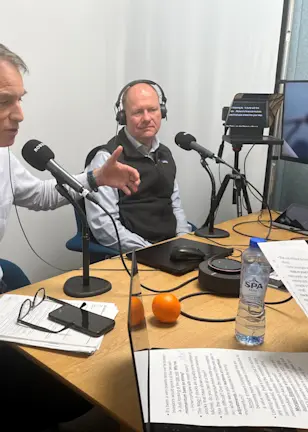Outcomes of the negotiations
COP16 is the first gathering of the parties since their agreement at COP15 in 2022 in Montreal on the global goal of halting and reversing nature loss by 2030. The focus of the negotiations in Cali was therefore on implementation: setting national targets, creating operational frameworks and mobilizing resources.
The latter topic dominated the outcome of the negotiations. Countries were unable to agree on how to mobilize the USD 200 billion of public finance by 2030 that was agreed upon in Montreal. Developing countries opposed the hosting of these funds in Washington and demanded the creation of a new vehicle.
This lack of agreement blocked progress on other topics as well. After an overnight plenary session, the conference ran overtime and was suspended in the morning of 2 November because too many delegates had already left, and there was no longer a quorum for decision making. Nevertheless, COP16 did yield results in three important areas.
Implementing Montreal
First, COP16 advanced plans for national implementation of the Montreal agreement. Some 119 countries submitted national biodiversity targets and 44 delivered fully-fledged biodiversity action plans. Parties also advanced the design of a joint monitoring framework to track the progress of individual countries, though this did not get final approval due to the suspension of the conference.
Second, COP16 introduced a new nature financing mechanism: a levy on profits made from digital genetic information gathered and made available through open source by scientists. Large companies that are monetizing this data, for example in pharmaceuticals and plant breeding, will be expected to pay a levy of 1% of their profits or 0.1% of their revenues. Half of the funds will go to public conservation efforts; the other half will be distributed to indigenous peoples and local communities. In addition, a new body will be created to include these groups in the governance of the global biodiversity agreement.
Third, COP16 agreed on the identification of the most critical and vulnerable parts of the ocean beyond national jurisdiction. These areas play an important role in marine biodiversity protection and the global target to protect 30% of land and ocean by 2030. The work to identify these marine areas had started already in 2010 but has stalled in the last eight years due to legal and political concerns.
Financing nature
With finance being the key issue in Cali, it was no surprise that Finance Day was one of the busiest days over the two weeks. Forested countries and indigenous peoples rightfully claimed the need to recognize and reward their custodial services.
Numerous announcements were made of new innovative mechanisms, blended finance, nature-for-debt swaps, biodiversity credits, jaguar bonds, and the like. Yet the actual new commitments to the Global Biodiversity Framework Fund, in the order of USD 196 million, fell short of expectations.
“
The crux is financing the transformation of industries that are currently harming nature and depleting natural resources
One speaker pointed out that the USD 200 billion that parties committed to in Montreal, represents only a tiny fraction of global financial markets, and should therefore be easy to mobilize.
However, the real point of course is about those other financial flows and their associated nature risks and impacts. Financing nature conservation is important. But the crux is nature transition finance – that is, financing the transformation of industries that are currently harming nature and depleting natural resources.
This was the main point that the delegation of investors brought to the negotiating table. On behalf of its members, the Finance for Biodiversity Foundation ensured that transition finance was included in the final agreements, as well as a recognition of the central role of Ministries of Finance and a whole-of-government approach to nature.
Growing momentum in business
COP16 demonstrated that nature is becoming a serious business. From the total of 23,000 participants, an estimated 3,000 were representing companies and financial institutions. This shows the growing momentum since Montreal, where business was notably present for the first time, with around 1,000 delegates.
Admittedly, it is the sustainability teams of companies that are being delegated, rather than the core business, which is in line with the maturity of the discussions that took place in Cali. The discussions centered around developing nature strategies, setting targets and initiating projects, rather than closing investments deals.
Three leading companies announced science-based nature targets, while another 30 published externally reviewed business nature strategies. Investors are not there yet; the first wave of investor-led nature targets is expected to be disclosed in the next six months. While still incipient, the era in which nature was solely the domain of conservationists has passed. Business and finance have nature firmly on their radar screens, and are working to integrate it into their strategies.
Overcoming the nature data challenge
Without doubt, in the numerous finance panels, the phrase most referred to was “the data challenge”. Investors continue to struggle how to capture nature risks and impacts in a way that is useful for investment decision making. Portfolio materiality assessments are already common practice, but portfolio construction requires measurement at the security level, which is still challenging.
The meetings at COP16 point to good progress. Businesses in Cali were already exchanging best practices in following the sector disclosure guides that the Taskforce on Nature-related Financial Disclosure (TNFD) only released last June. Data providers were notably present, and some took the occasion to highlight new geospatial datasets developed in collaboration with nature organizations such as the UK’s Natural History Museum and the Worldwide Fund for Nature (WWF).
This combination of evolving standardized industry reporting, together with asset-level nature datasets, will enable investors to meaningfully advance in assessing nature at the security level. Nature data is progressing to become decision-useful, and we expect to see that reflected in investment portfolios in the coming years.
The human element
The warm hospitality of Cali, and the abundant joy with which the city embraced the topic of biodiversity, was felt by all conference participants. The green zone in the center of the city, where delegates mingled with the local residents, was a testimony to the rich biodiversity in the country and its strong connection to Colombian culture and identity.
“
Change is not driven by fear or regulation. It is driven by love’
In the blue zone, where the formal negotiations took place, the massive presence of indigenous leaders reminded all delegates of the leading role that indigenous peoples have in looking after the world’s forests and biodiversity reserves.
On stage, Peter Bakker, CEO of the World Business Council for Sustainable Development, said: “Change is not driven by fear or regulation. It is driven by love. While love for catastrophic climate change is difficult, love for nature is easy. Let’s love nature.”
His words rightfully point to the human element that is central to all this. However, equally critical is the need to develop real policies and incentives to bolster the financial materiality of nature and to drive the transition.
COP16 advanced on both aspects, but much more is needed. While not progressing as much as hoped for, COP16 did lay important groundworks for policy action this decade. This will help build further momentum for nature action in business and finance.
Holen Sie sich die neuesten Einblicke
Abonnieren Sie unseren Newsletter, um aktuelle Anlageinformationen und Analysen durch Sachverständige zu erhalten.


















